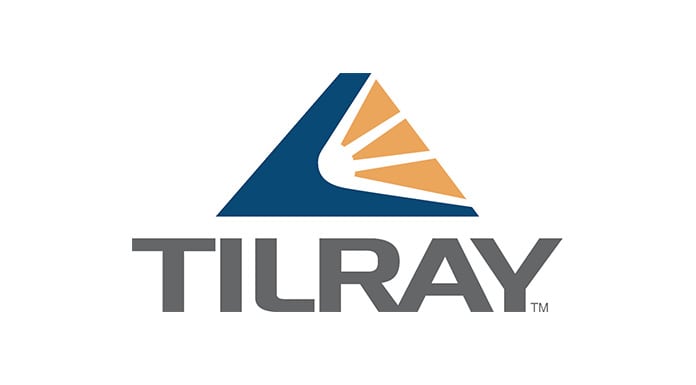Canadian cannabis giant Tilray sees its net loss improve to $184 million
In February, Tilray laid off 10 percent of its staff as part of a “global restructuring effort.” Whatever Tilray has been busy doing since this time, the company – one of the most acknowledged and sophisticated producers on a global scale – seems to be experiencing some positive repercussions.
Headquartered in Nanaimo, British Columbia, the major Canadian cannabis company reported a net loss of $184.1 million for its financial quarter concluding on March 31.
Albeit a net loss, the results indicate an improvement from the former financial period, which saw Tilray endure a $219.1 million loss. The company’s adjusted EBITDA loss of $19.7 million salvaged 44 percent in comparison with the previous loss of $35.3 million loss; reported by Tilray in Q4 2019.
Cost reductions and a better operating system were attributed to Tilray’s financial improvement. Canadian cannabis company Tilray is also succeeding amid the Coronavirus (COVID-19) pandemic because of the company’s continued ability to serve medical cannabis consumers; through dispensaries in other “essential markets.”
“The company’s operational sites remain open, but with enhanced measures to protect the safety of its workforce including rotating shifts of se;f-quarantined staff, reducing the sites to business-critical personnel only, physical distancing incorporated into manufacturing lines and cultivation sites, sanitation protocols and other enhanced safety measures,” the company explained in a publicly-published disclosure during the second week of May.
An overview of the factors influencing Tilray’s net loss
Tilray has tumbled a few times over the past year or so; but then again, so have many cannabis companies amid the current economic climate. However, due to a lower Canadian dollar, the Candian medicinal cannabis producer succumbed to currency loss of $28.1 million;contributing to Tilray’s net loss.
Furthermore, Tilray’s net loss was partially down to the fact that there was an adjustment of the fair value of the warrant liability of $72 million. Asset impairment of $29.8 million was also noted by the company, which managed to rebound pretty well when it discovered that revenue concluding on March 31 had increased quarter-over-quarter to a healthy $52.1 million.
Despite the fact that Tilray’s net sales revenue was an improvement from the $46.9 million in sales revenue that was pulled in for the earlier quarter’s sales, the improvements did not far exceed revenue recorded in Q3 2019 — $51.1 million.
Here are some clearer insights into Tilray’s cannabis sales revenue for the three months concluding on March 31:
- Tilray reported international medical cannabis sales of $5.8 million; an increase from the previous quarter’s $4 million, but similar to the $5.7 million recorded for the quarter concluding Sept. 30, 2019.
- Tilray’s hemp revenue was clearly high in demand among consumers recently, with the results for its financial quarter concluding on March 31 demonstrating revenue in excess of $21.3 million; better than the $18.7 million accrued over the previous quarter.
- The Canadian cannabis company’s adult-use revenue topped $20.9 million; slightly more than the $17 million recorded for the previous quarter.
- Quarter-over-quarter medical cannabis revenue in Canada climbed from $4.05 million; an increase from the previous quarter-over-quarter revenue of $3.3 million.
On a regional level, Canadian cannabis revenue gleaned by Tilray takes the lead at around $30 million. Cannabis revenue generated by the Canadian cannabis company from the U.S. market rested at $16.5 million, while sales accrued elsewhere around the world accounted for $6 million of Tilray’s cannabis sales.
Tilray’s financial results exceeded most analyst projections
Analysts were in shock when they saw Tilray’s cannabis revenue results. Currently, approximately 16 analysts are monitoring this rollercoaster pot stock. Of those analysts, 12 recently recommended that traders “hold,” while two said that a “buy” would work in their favor. According to one of the cannabis stock analysts, a “sell” could be the best option, while another is advising a “strong sell” right now.
The company’s adjusted EBITDA loss of $19.7 million was much less significant than the predicted loss of $30 million by the Bank of Montreal subsidiary BMO Capital Markets. A swathe of industry analysts slashed Tilray’s target price a little less; Cowen and Company estimated losses between $9 and $15; Benchmark reduced the target price from $28 to $14; Alliance Global Partners would slip from $15 to $9.
Conversely, Eight Capital anticipated that Tilray’s target price would tumble from $17 to $9, while Stifel forecasted an increase in the target price from $5.5 to $6.5. Jefferies – a New York City-headquartered American multinational independent investment bank and financial services company – also raised the target price for Tilray stock to $6 from $5.
The aforementioned analysts could be onto something, considering the fact that the stock’s average target price is $8.35; indicating an upside potential of five percent when compared with the closing price listed for Tilray’s cannabis stock on May 18 — a day on which the stock closed 2.4 percent higher at $7.96.
Tilray’s cannabis stock trades on the NASDAQ under the ticker “TLRY”.








